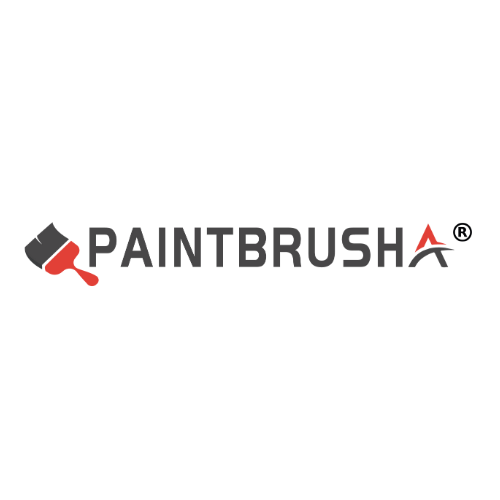Choosing colours for your next paint project can occupy your time as you pore a spectrum of shade swatches. Yet to achieve smooth, complete, precise coverage, you’ll also need to put a bit of thought into your brushes.
While many DIYers opt for rollers on large surfaces like walls, a brush provides greater precision while using less paint. It also provides more versatility, as brushes can create smooth and textured finishes, depending on your technique. And you’ll rely on brushes for trim and other detail work, as well as for painting furniture and walls.
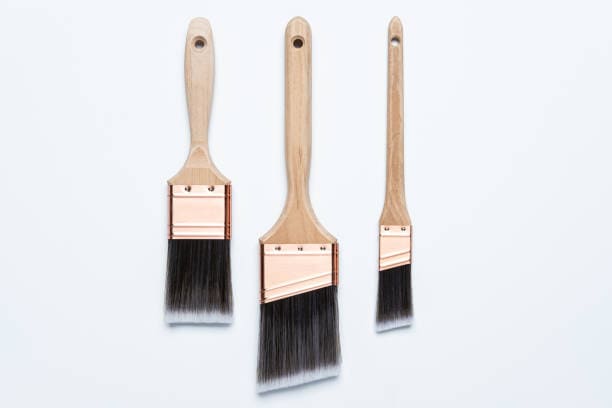
Paint Brush Materials
Brushes come in a variety of materials and sizes. The most commonly used ones are natural hair bristles (often called hog bristles), synthetic bristles (often called nylon), and horsehair bristles (also known as horsetail bristles). Each type has its pros and cons—so let’s look at which one is right for you!
Types of Paint Brushes to Decorate Your Home
1. Natural Hair Bristles Paint Brush
These are the standards when it comes to brushes. They provide good coverage but can take some time to dry completely, making them not ideal for large surfaces like walls or ceilings where you need instant results. Natural hair bristles have been added.
Natural bristle brushes are made up of animal hairs that include the hair of ox, camel, horse, etc. These brushes are used for oil-based paints, varnish, enamel and decorative chalk paint. They hold more paint and are also easy to apply.
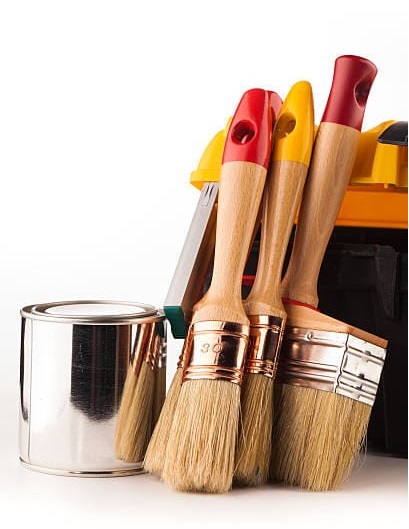
The natural bristle brush is unsuitable for latex paint (water-based paint) because it absorbs too much water, which is present in latex paints, where advanced finishing is required. At that time, ox hair brushes are used for painting.
2. Synthetic Brush
Does your brush feel like it’s covered in glue? Maybe you’re using the wrong type of paint. You don’t have to get rid of your old brushes—switch to synthetic ones, and you’ll be able to use them for years to come!
Synthetic brushes are made of high-quality polyester or a blend of nylon and polyester, better suited to latex (water-based) paints. Natural bristles soak up water, becoming limp and less effective at spreading paint. Low-VOC (volatile organic compound) paints, most of which are acrylic latex based, are also best applied with a synthetic bristle brush. Both natural and synthetic brushes can last for years if cleaned and dried thoroughly after every use: Remove excess paint, wash with soapy water, rinse in freshwater, and let it dry on a flat surface.
3. Flagged-Bristle Paint Brushes
This brush is splitting in nature at the end to hold more paint and give full coverage. Also, it has flagged bristles to give a smooth and clean finish.
4. Large Paint Brushes
The great paintbrush is used for painting the ceiling of the house. It is also used for painting walls and other parts of the house. The brush has long bristles and short handles. Some people suggest purdy paint brushes in this regard, but to be honest, there are various quality brands that you can’t use in your paint project.
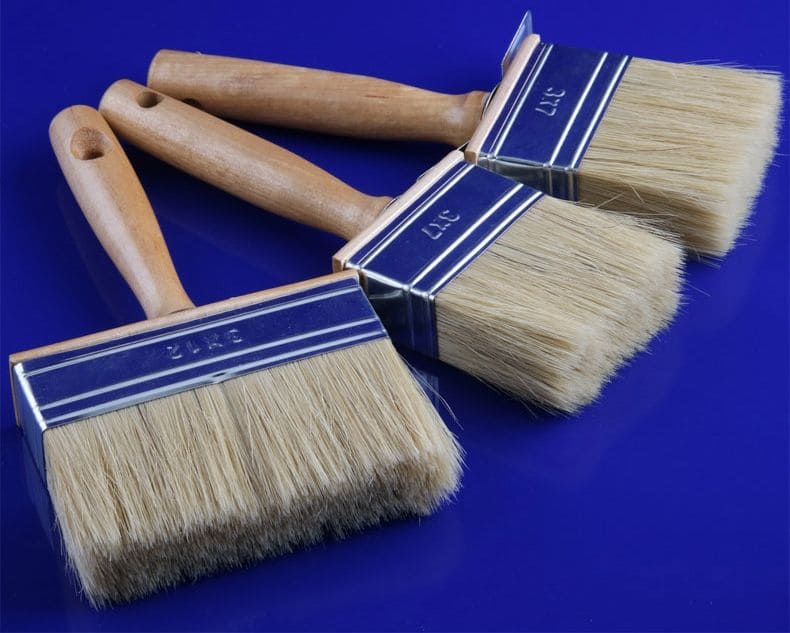
The large paint brushes have longer bristles and shorter handles to cover a larger house area. The length of the bristles makes it easy to reach all corners of the room.
5. Small Size Paint Brushes
A small paintbrush is a brush with a small width, generally between 0.5 and 1.5 inches in width. Small brushes are delicate and tiny, depending on the size of the brush head. They have long handles that are usually made of wood or plastic.
Small paint brushes are used for various applications, including door frames, ceilings, corners, and other small areas of the painting. These brushes can be used with water-based paints as well as oil-based paints.
6. Medium Size Paint Brushes
If you’re looking for a brush with the perfect balance of flexibility and control, look no further.
This brush is made with the finest bristles that are handpicked for their ability to blend colours consistently. It’s pliable enough to create a smooth finish on your canvas but strong enough to be used for larger areas of paint such as walls, ceilings, doors, cabinets, etc. The medium size of this brush will allow you to create fine details and build up larger areas with ease.
7. Flat Sash Brushes
As long, thin, and narrow in shape, the R series long-haired flat brush makes painting doors, windows, and cabinets less of a chore. And with its soft bristle, it’s easy to flip the paint on the surface.
8. Finishing Brushes
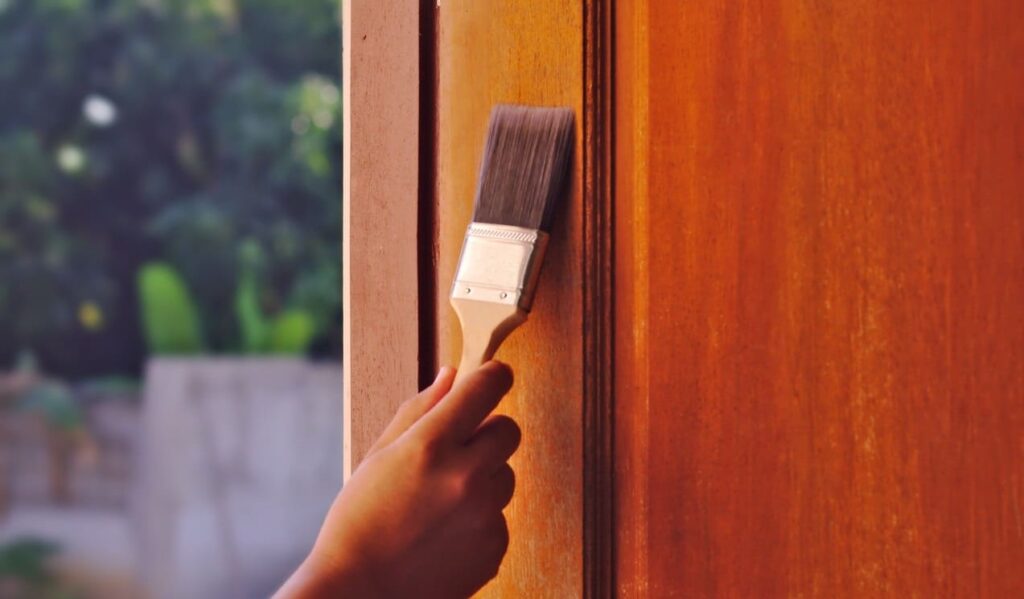
The finishing brush is used for painting cabinets, doors and windows. It is also used for painting furniture and other interior surfaces. The bristles of the finishing brush are made of soft material, which makes it easy to use and clean. The bristles are made from high-quality synthetic fibres, which ensures durability and strength. The hair on the brush is strong enough to provide a smooth paint finish when applied on different surfaces.
The finishing brush can be cleaned easily with water or a dry cloth by wiping it off with a cloth after use.
9. Foam Brushes
Foam brushes are not suitable for full-wall painting. These brushes are specially designed for stain, urethane, and paint. They have stiffer bristles which can be used to apply these products.
Foam brushes are handy for consistently applying the product. However, when it comes to applying the product on the entire surface of your wall, you need to use a specifically designed brush for this purpose, as foam brushes will not provide the same results.
The best way to go about this is by using a foam paint brush designed especially for this purpose, such as a flat brush or an angled brush, depending on the type of work you need to do on your walls. Using these tools will ensure you get great results every time without any issues!
10. Stencil Brushes
A stencil brush is used for stencilling work on the wall. This brush is unique. They have more compact bristles and round shapes. Stencil brushes are one of the most effective tools for painting large areas of your home or office at a time. Stencil brushes can be purchased at most art stores or online, so it’s easy to find something to suit your needs.
11. Varnishing Brushes
If you’re a severe painter, you might wonder why you need a varnishing brush. After all, most people think that varnishing is just the last step in the painting process and that it’s an extravagant purchase regarding brushes. This notion is incorrect because varnishing is one of the final tasks of painting and is integral to the final look of your painting. This is why a varnishing brush is more of a small investment if you’re a serious painter. Usually, varnishing brushes are big, flat brushes, at least a couple of inches wide (preferably five cm), a third of an inch thick (1 cm), and have long bristles. These can be natural or synthetic hairs, but they are usually soft.
12. Stipple Brushes
There are a few different paintbrushes, but one of the most versatile is the stippler. Stipplers are designed to be used with acrylic paint (acrylic paints) or watercolours and help create soft, open foliage and fur on your painting that gives it a natural look with acrylic brushes.
The best part about using stipplers is that they can be used dry, so you don’t need to use any water or paint thinner—load up your brush and go. The amount of pressure you apply when pouncing determines how light or dark the colour will be.
Stipplers come in various sizes and shapes; some have round brush bodies like sable brushes, while others have oval bodies like squirrel brushes. Most have flat bristles, though some have pointed bristles for finer detail work.
13. Trim Brushes
Yes, the small brush looks very similar to the angled brush, but it has a very different use and is not a common choice among artists.
Trim brushes are usually characterized by short handles that give the user complete control over the brush. The short handle provides increased control while using the brush, which means that not only will you have more efficiency, and easier manoeuvring in smaller spaces, but you’ll also get less tired while using it and, as a result, be able to work much faster. The small brush is designed to give better usability than an angled brush (or an angled sash brush) in such a way that it provides better control and completes the task faster.
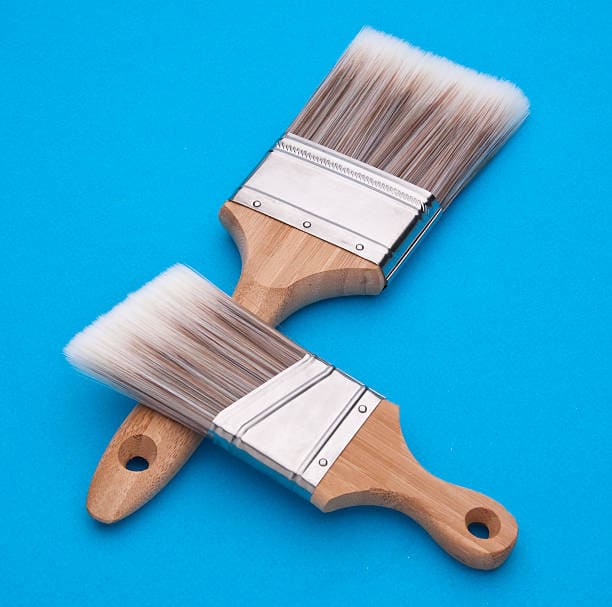
What to Consider when Choosing the Best PaintBrush
You’ve got your paint and brush, and it’s time to get to work! But before you can do that, there are a few things you need to know about what kind of brush will work best for your needs.
First, the type of bristles on the brush is essential—and there are two major categories: natural, which is recommended for oil-based paints and synthetic, which is best for water-based paints. Natural brushes are made from animal hair like hog or badger—fibres with microscopic splits that hold more product to create a smooth finish. Choose a natural-bristle brush when applying oil-based paints and top coats, varnishes, shellac, decorative chalk paint (for an antique look), enamel, and polyurethane. You’ll also get good results using a round to apply furniture wax.
Second, size matters too: You don’t need an entire blanket of bristles on your brush if you only need a few inches at most; instead of buying large brushes that might be hard to use in small spaces (like between cracks in tiles or grout lines), opt for smaller ones that can reach.
Paint Brush Size
Most Paint brushes for house painting typically come in sizes ranging from 1 to 6 inches. Generally speaking, the tighter the area you’re painting, the smaller the brush should be. A 1- to 2½-inch brush is best for window areas, trim, and corners. A 3-inch brush works best for doors, cabinets, and shelving, and a 4- to 6-inch brush is designed for large, flat areas like walls and ceilings.
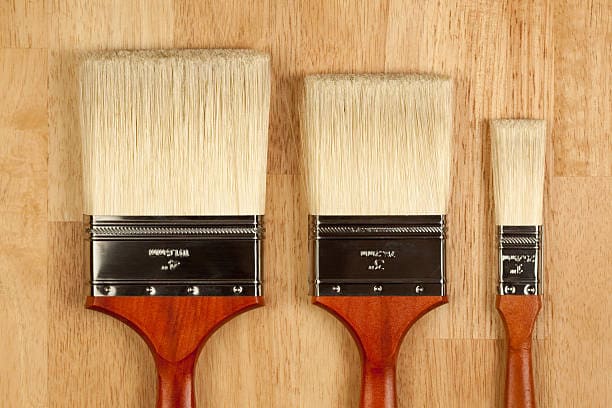
When choosing a paintbrush for your next project, consider how much paint you’ll need to cover the surface. If you have a small area with only one coat needed (like an interior wall), then a smaller brush will work just fine. If you need multiple coats on your wall or ceiling (like staining), it may be worth investing in a larger size so that you don’t waste any product on areas that need more than one coat of paint before being covered with another colour or stain. Natural bristles soak up water better than synthetic bristles because they’re made of high-quality polyester or nylon blends instead of natural hair fibres: Natural hair brushes won’t absorb.
Paint Brush Style
Did you know that paintbrushes come in different styles? There are three main styles of paintbrushes: square cut, angle sash, and round. Each style is designed for a different purpose and surface area.
Square cut: A 4- to 6-inch square-cut wall brush is ideal for large, flat surfaces, both interior and exterior. Use a large brush to paint walls, flat doors, and siding. With a good-quality wall brush, you won’t need rollers—and you may even save on paint because brushes are more precise.
Angle sash: This brush was designed to paint window sashes, which fit inside the window frame and allow the panes to move up and down. That said, this short-handled, angled brush is excellent for a variety of detail work because it’s easy to manoeuvre and offers excellent stability. Use it to paint grooves, panels, edges, and corners—and reach around obstacles, like behind a toilet.
Round: Round-cut brushes are perfect for small spaces where you don’t want any excess bristles getting in your way. They’re also ideal for furniture painting or other detailing work where a lot of detail is involved but you.
Paint Brush Quality
In a world where beauty is a commodity, it’s essential to know that quality is still your friend when it comes to make-up brushes. While there are many high—quality options and some very affordable ones, you don’t want to skimp on quality. The best way to tell if a brush is worth its price tag is by looking at the bristles. You’ll want flagged bristles—slightly split at the ends—because these hold more paint and provide the best coverage.
Flex bristle tips ensure they spring back into shape after every use, while shorter bristles on the outside and longer bristles toward the centre create precision and control. Finally, 50 per cent longer than the width of the brush to pick up the ideal amount of paint while providing maximum coverage and control.
Care Should be taken for Paint Brush.
Painting your home is a great way to make it feel more like a home, but when it’s time to finish the project and give it that final touch, you’re probably wondering how you’ll get all those bristles clean. The good news is that you can take some simple steps to keep your brushes squeaky clean while they dry.
First, do not use dish soap or harsh detergents on your brushes or bristles! Dish soap will break down the natural oils in your bristles, which can lead to them becoming brittle and less effective at cleaning paint. Instead, use warm water and gentle soap—like Dawn Dish Detergent—to wash them off. You should also rinse your brushes well after this to avoid leaving residue behind.
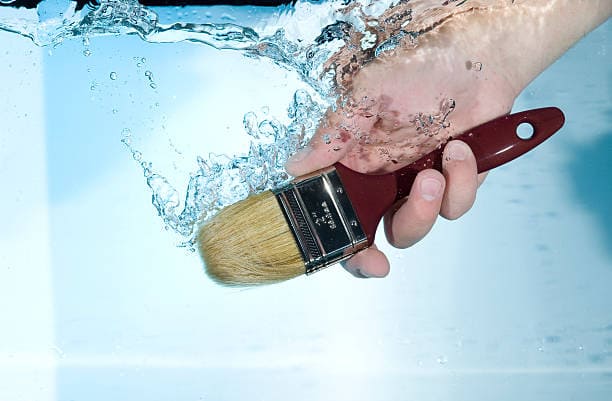
Then let them dry! Hang them upside down, so the bristles don’t curl into a specific shape as they dry. This will prevent any unwanted fraying once you’re done with painting and have washed away the remaining paint with water instead of using a brush.
If you want even more control over how your brushes look throughout the drying process (and don’t mind paying a little extra), consider investing in an anti-static.
Conclusion
In the end, the right paintbrush is the one that the artist is most comfortable with. Short-handled, long-handled, filbert or flat – the marks and the result matter. It may take some time and experimentation to find what’s suitable for you and your application, but hopefully, this little guide will help you make an informed decision.
